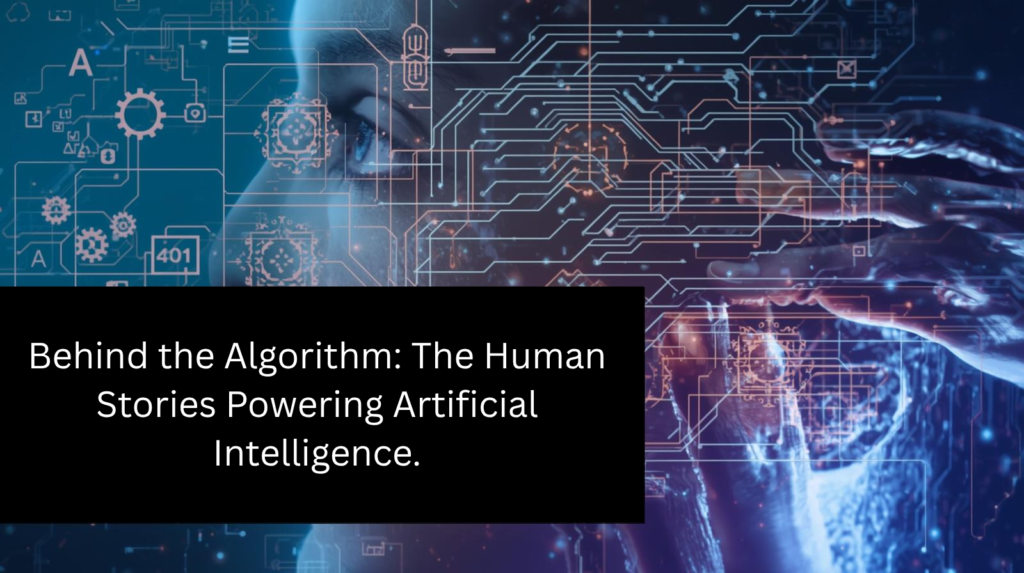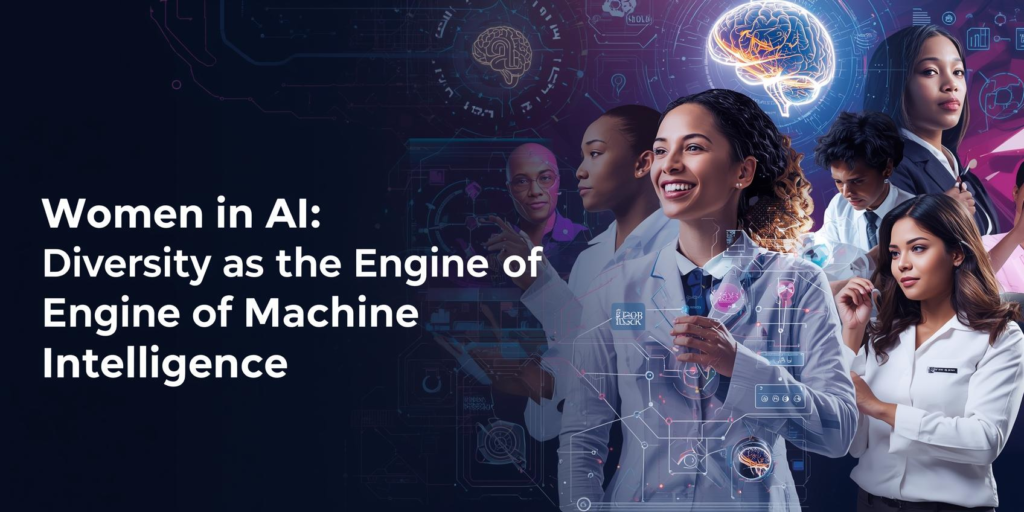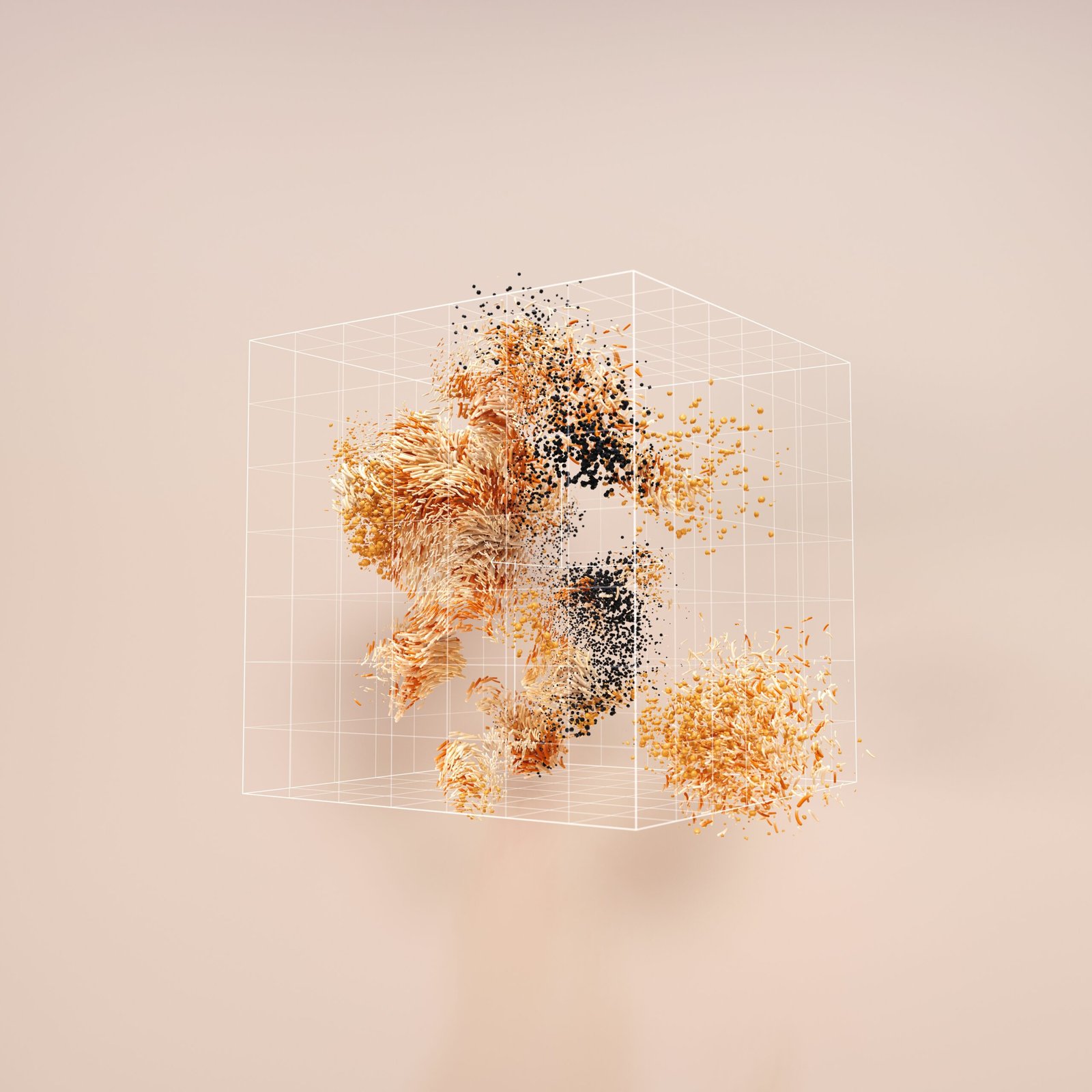
Introduction: The Human Pulse Behind Every Algorithm
In a world obsessed with innovation, where artificial intelligence seems to think, decide, and even create like humans, we often forget one simple truth — AI doesn’t exist in isolation. Behind every algorithm, every chatbot, and every smart recommendation lies a team of human minds, coding, correcting, and questioning the ethics of what they create. This is the human side of AI, where data scientists dream of fairer systems, annotators painstakingly label millions of images, and ethicists debate what “responsibility” means in the age of machines.
At AixCircle, we believe that to truly understand artificial intelligence, you must first understand the people who build it. Their decisions — from dataset design to algorithmic fairness — shape how billions of humans interact with technology daily. This blog dives deep into the humans behind algorithms, exploring the challenges, values, and empathy that make AI not just intelligent, but meaningful.
The Hidden Workforce of AI: The Unsung Heroes of Machine Learning
Every AI model starts with one thing — data. But before that data becomes usable, it passes through countless hands. Data annotators and AI trainers form the backbone of artificial intelligence, yet they remain invisible in most discussions about the AI workforce stories. These workers — often based in developing nations like India, Kenya, and the Philippines — spend hours labeling everything from street signs for self-driving cars to facial expressions for emotion recognition systems.
For instance, when an AI camera recognizes a smiling face, it’s because thousands of annotators manually tagged “smile” across millions of photos. When a chatbot understands sarcasm, it’s because language experts trained it to recognize tone. These are the real human architects shaping intelligent behavior, even if they never get public recognition.
However, the challenge remains: are these workers fairly compensated and acknowledged? Ethical AI doesn’t just mean fair algorithms; it means fair labor practices too. Recognizing their role is essential in building AI ethics and responsibility into the foundation of machine learning systems.
Women in AI: Diversity as the Engine of Machine Intelligence

Technology has long been dominated by male perspectives, but that’s rapidly changing. Across the world, women are taking the lead in AI research, engineering, and ethics — and they are bringing empathy, inclusion, and diversity into the equation. From pioneers like Fei-Fei Li, who championed human-centered AI, to countless women scientists in India working on socially conscious innovation, diversity is not just a checkbox — it’s a necessity for better machine intelligence.
A diverse AI workforce ensures that biases embedded in datasets are recognized and corrected. Women in AI often bring perspectives rooted in collaboration and fairness, ensuring that technology doesn’t deepen inequality but instead uplifts underrepresented voices. In cities like Bengaluru and Hyderabad, more women-led AI startups are emerging than ever before — designing algorithms for healthcare, education, and accessibility.
As AixCircle highlights, AI diversity and inclusion is not an optional moral pursuit; it’s a technical requirement for building models that serve a truly global population. Machines trained by diverse teams think more ethically, more accurately, and more humanely.
Moral Dilemmas: When Algorithms Make Life-Changing Decisions
What happens when AI systems decide who gets a loan, which patient gets a hospital bed, or whether someone qualifies for a job? The answer isn’t just mathematical — it’s moral. AI developers face some of the toughest ethical crossroads imaginable. If an algorithm denies a person healthcare coverage because of biased training data, who is accountable — the coder or the code?
This is where the AI ethics and responsibility discussion becomes crucial. Human designers must constantly question not just whether AI can make a decision, but whether it should. In one striking case, an AI hiring system developed by a major tech company was found to discriminate against women because historical data favored male applicants. Engineers had to step in to reprogram fairness into the system — proving that human oversight remains the moral compass of artificial intelligence.
At AixCircle, we believe that humans behind algorithms must always maintain ethical guardrails. Transparency, explainability, and empathy aren’t technical add-ons; they are essential principles that ensure AI doesn’t just function efficiently, but fairly.
The Human Side of AI: Empathy Meets Engineering
AI is often described as emotionless, but the people designing it are not. Engineers, researchers, and data scientists spend years understanding human behavior so machines can emulate it. The human side of AI is filled with stories of trial, failure, and imagination.
Take the story of Ananya, a young AI researcher from Pune, who developed an algorithm that can detect early symptoms of Alzheimer’s disease from speech patterns. She spent months training the AI on voices of elderly patients, ensuring that the model didn’t just process data but understood emotion and context. For her, AI wasn’t about automation — it was about compassion through computation.
These are the people who turn technology into a tool for humanity. Their motivations go beyond efficiency — they aim to make the world kinder, safer, and smarter through responsible innovation. AI isn’t replacing human empathy; it’s amplifying it.
The Invisible Moral Architects: Ethicists and AI Guardians
Every major AI company today has ethicists — the philosophers, sociologists, and moral thinkers shaping machine behavior. These professionals define the boundaries of what AI should and shouldn’t do. From preventing AI surveillance misuse to addressing algorithmic bias in criminal justice systems, ethicists are the invisible moral architects of the digital age.
But their job isn’t easy. In an industry driven by speed and competition, taking a stand for ethical restraint can often mean slowing down innovation. Still, it’s essential. Without ethical intervention, even the most advanced models risk turning harmful. These ethicists play a central role in maintaining AI ethics and responsibility, ensuring that the human side of AI remains central to every innovation.
At AixCircle, we support a growing global dialogue where AI ethics is not an afterthought but a design principle — woven into every layer of AI development.
Collaboration Over Competition: The Future of Human-AI Teams
In the next decade, the relationship between humans and AI won’t be about replacement — it will be about collaboration. As AI takes over repetitive and analytical tasks, humans will focus on creativity, strategy, and empathy. The future belongs to hybrid teams where humans behind algorithms work hand in hand with their creations.
Imagine a doctor diagnosing a rare disease with AI assistance, or a journalist using AI tools to verify global news stories. In each case, technology enhances human potential, not replaces it. This is the next phase of AI diversity and inclusion, where skills, cultures, and intelligences — human and artificial — merge to solve global problems.
At AixCircle, we call this the “Collaborative Intelligence Era.” It’s where every click, command, and code reflects a partnership between human intuition and machine precision.
Challenges Ahead: Keeping Humanity at the Core of AI
The road ahead is not without its challenges. AI systems still carry biases from their training data. Global inequality affects who benefits from automation. And there remains a real risk of dehumanizing the workforce if we treat AI purely as an efficiency tool.
To counter this, the industry must double down on ethical frameworks, transparency mandates, and inclusive hiring practices. AI ethics and responsibility must evolve from guidelines to global standards. Governments, corporations, and educational institutions must collaborate to ensure that future AI leaders are trained not just in coding, but in conscience.
After all, intelligence — whether artificial or human — means nothing without empathy.
Conclusion
Behind every smart machine, there’s a human heart — writing, debugging, and dreaming of a better world. AI isn’t magic; it’s human effort multiplied by technology. Every engineer who stays up late refining a model, every annotator who labels millions of images, and every ethicist who questions what’s “right” for AI — they are the true creators of our digital future.
The human side of AI is what keeps technology grounded in morality. And as AixCircle continues to explore the evolving world of artificial intelligence, one truth stands tall — the smartest algorithms are those that never forget their human origin. Because at the end of every line of code lies a story — and every story begins with a human being who dared to teach machines how to think, feel, and evolve responsibly.

